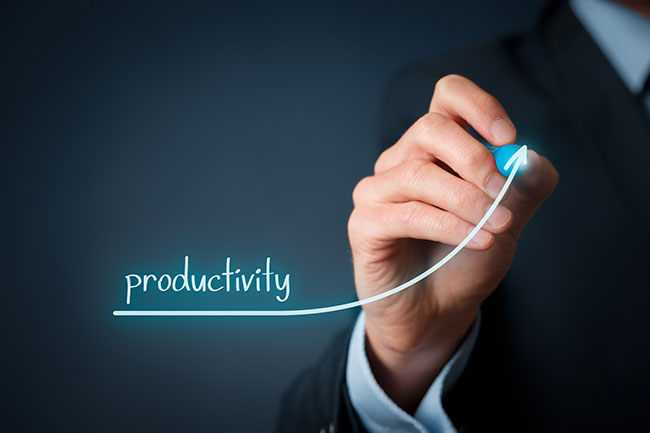Office Design Tips to Increase Productivity
Posted by HJT Design

Making smart and simple design choices can improve your staff’s productivity and make them a lot happier to come to work each day. Your working environment impacts their job satisfaction and ultimately their performance. You may be doing all you can to make the office warm for patients as well as staff, but a better designed office can go even further in creating an inviting atmosphere, especially for those people who spend 8 hours a day there.
There have been countless studies in the psychology of the working world, and office design trends have evolved dramatically in the last few decades in light of these shifting trends. Consider the following for your next dental office redesign or expansion.
Lighting and Color Choices
Lighting and color choices are two areas that require careful consideration, and the choices are bigger than personal preference. Take time with these choices, whether you are opening a new office or redesigning an existing one.
Lighting needs to be inviting as well as functional. Dimly lit areas are inherently hazardous, and no one enjoys working in the dark. Make sure your employees are able to see what they’re doing comfortably. Natural light has a more positive, energizing effect compared to the typical sterile lighting found in most medical settings.
When it comes to color choices, pick hues that will keep your staff energetic and awake throughout the day. Warmer tones are going to keep your employees alert and responsive. Calmer tones such as greys, purples, and blues are going to have a subduing effect. Weigh your options and be sure to consider lighting as you select a color scheme for your office.
Traffic Flow
Dental offices can be busy work environments, so you want to approach your new office design with traffic flow in mind. If there are areas of your office bound to see a great deal of foot traffic, be sure to design it in such a way that it is clean and accessible. A beautifully designed space with no elbow room is useless. Give employees have ample space to move. A cluttered or tight space can increase patient anxiety, making your staff’s job more difficult.
The staff in your office is probably going to need to move equipment between exam rooms from time to time, so make sure this isn’t a chore for them by designing with enough space for employees to move things around comfortably. A large part of increasing productivity is empowering your employees to perform their best work, so consider this carefully for every step of the design process.
Staff Accommodations
Your staff is naturally going to be more productive if they’re comfortable at work. If you’ve assessed the foot traffic patterns, lighting, and color choices, it’s time to think about the other amenities you’d like to offer your staff.
Plan a break room that allows staff members to relax during break times and consider ways you can bolster productivity, such as a modern coffee machine or vending machine with healthy snack options. You should also provide a refrigerator for employees to store food and lunches they bring from home.
Exam Rooms
The examination rooms should receive the most attention since they are seen by the employees and patients. You want to design in such a way that you can easily upgrade chairs, lighting, and other fixtures with ease. You should also consider other ways to increase productivity in the exam rooms.
For example, you may want to investigate some sort of soundproofing for the walls between exam rooms. Dental appliances are often noisy. Coupled with the chatter of staff and patients, dental offices can be downright loud. Reduce how much sound travels through your office to make it easier for your employees to communicate with patients and perform their other duties.
Designing with productivity in mind doesn’t have to be a chore. When you work with HJT Dental Office Consultants, we can take any of your specific considerations into account as we help you through the design process.